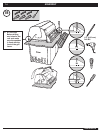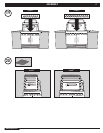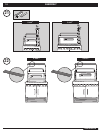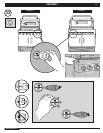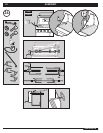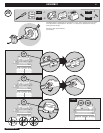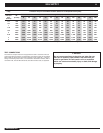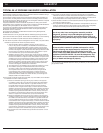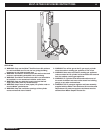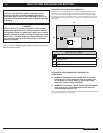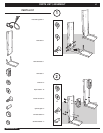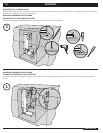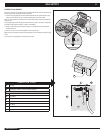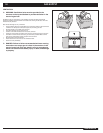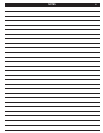Special offers from our partners!

Find Replacement BBQ Parts for 20,308 Models. Repair your BBQ today.

Buy Weber Grill Parts. It couldn't be easier. Find your Weber parts here.
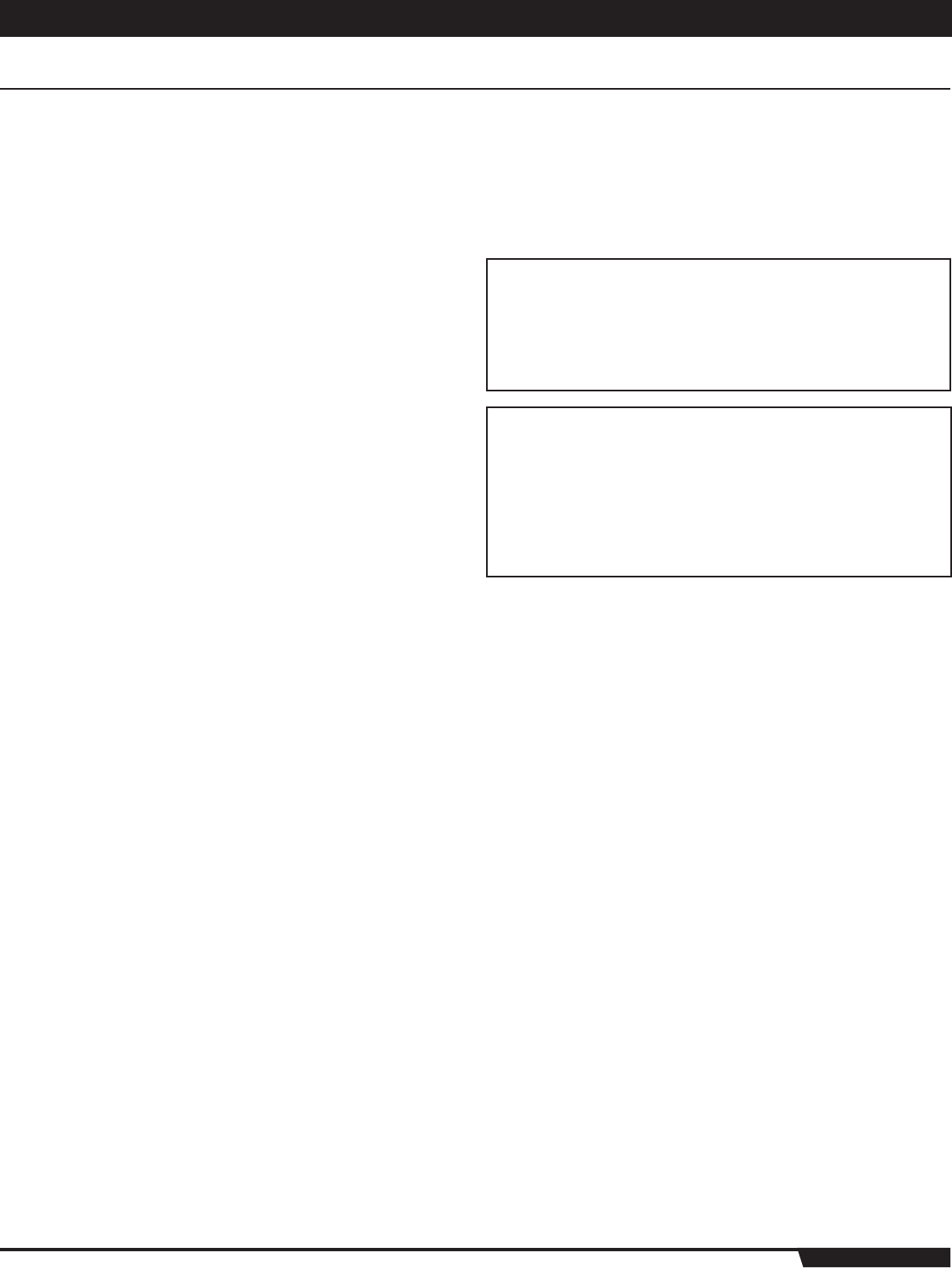
24
WWW.WEBER.COM
®
TYPICAL 20 LP PROPANE GAS SUPPLY INSTALLATION
GAS SUPPLY
The remote tank enclosure kit provide with you grill shall be used for installations using a
20 lb LP cylinder, mounted in an “island” structure.
The remote tank enclosure shall house the included hose and regulator assembly and
gas connections, the tank bracket and the fuel scale for connecting a remote mounted
LP cylinder to the Summit
®
Built-In gas grill. The hose and regulator is listed as a required
part of the CSA listed Summit
®
Built-In gas grill.
A properly installed tank enclosure meets the requirements for venting, tank retention
and separation of the LP cylinder from a heat source as outlined in the ANSI Standard for
Outdoor Cooking Gas Appliances, Z21.58/CSA 1.6 for LP enclosures.
You need to hire a licensed contractor or licensed plumber and they need to follow the
requirements described in the ANSI Standard for Outdoor Cooking Gas Appliances,
Z21.58/CSA 1.6 for LP enclosures.
The requirements described in the Standard for Outdoor Cooking Gas Appliances,
Z21.58/CSA 1.6. are as follows;
A remote enclosure for an LP gas cylinder shall be ventilated by openings at both the
upper and lower levels of the cylinder. This shall be accomplished by one of the following:
A) One side of the remote LP cylinder enclosure shall be completely open; or
B) If the remote LP cylinder enclosure is designed to have four sides, a top and a bottom,
ventilation is required for the remote LP cylinder enclosure;
1) There should be at least two ventilation openings, (a hole or group of
holes, for the purpose of ventilation) in the sidewalls of the island structure.
The openings should be located within 5 inches (127mm) of the top of the
enclosure. The ventilation openings should be equally sized and spaced at a
minimum of 90 degrees, and be unobstructed. The openings shall have a total
free open area of not less than 20 square inches. (This relates to 1 square
inch of ventilation area, per pound of stored fuel capacity).
2) Ventilation openings (a hole or group of holes, for the purpose of ventilation)
should be provided at floor level. The ventilation openings should have a total
free area of not less than 10 square inches. (This relates to 1/2 square inch of
ventilation area, per pound of stored fuel capacity). There should be at least
two ventilation openings if the ventilation openings at floor level are in the
sidewall. The ventilation openings should be within 5 inches (127mm) of the
floor. The ventilation openings should be of equal size and be spaced at a
minimum of 90 degrees, and should be unobstructed.
3) The minimum size of the ventilation hole (s) should not be less than 1/4 inch.
4) The ventilation openings in the sidewalls should not allow venting into
the empty or “hollow” area of the “island”. If a gas leak should occur or
the LP cylinder should vent in the LP cylinder enclosure, the gas should
not be allowed to vent or migrate into the empty or “hollow” area of the
“island”. Ventilation openings in the sidewalls of the enclosure should only
communicate with the outside of the “island” structure, so that the gas can
dissipate outside of the “island” structure.
C) If the remote LP cylinder enclosure has four sides, a top and a bottom, and is intended
for installation in a built-in “island” enclosure;
1) At least one ventilation opening (a hole or group of holes, for the purpose
of ventilation) needs to be on one side of the enclosure that communicates
with the outside of the “island” structure. If a gas leak should occur or the
LP cylinder should vent in the LP cylinder enclosure, the gas should not
be allowed to vent or migrate into the empty or “hollow” area of the “island”.
Ventilation openings should only communicate with the outside of the “island”
structure, so that the gas can dissipate outside of the “island” structure. The
ventilation opening should be located within 5 inches (127mm) of the top of
the enclosure, and should have a total free area of 20 square inches. (This
relates to 1 square inch of ventilation area, per pound of stored fuel).
2) At least one ventilation opening (a hole or group of holes, for the purpose of
ventilation) needs to be on one side of the enclosure that communicates with
the outside of the “island” structure, at the bottom. If a gas leak should occur
or the LP cylinder should vent in the LP cylinder enclosure, the gas should
not be allowed to vent or migrate into the empty or “hollow” area of the “island”.
Ventilation openings should only communicate with the outside of the “island”
structure, so that the gas can dissipate outside of the “island” structure. The
ventilation opening should be located within 5 inches (127mm) of the bottom
of the enclosure, and should have a total free area of 10 square inches. (This
relates to 1/4 square inch of ventilation area, per pound of stored fuel).
3) The minimum size of the ventilation hole (s) should not be less than 1/4 inch
(6.35mm).
ƽ DANGER
Use of any other hose and regulator assembly could be
dangerous, and may not provide adequate gas supply to
the Summit
®
Built-In gas grill, and could result in a fire or an
explosion causing serious bodily injury or death, and damage
to property.
ƽ DANGER
Failure to build a remote LP cylinder enclosure for a 20 lb
cylinder following the requirements for ventilation, cylinder
retention and separation of the LP cylinder from a heat
source, listed in the ANSI Standard for Outdoor Cooking Gas
Appliances, ANSI Z21.58 CSA 1.6, could be dangerous, and
could result in a fire or an explosion causing serious bodily
injury or death and damage to property.
If you do not follow the DANGER statements exactly, the Warranty on the Summit
®
Built-In
gas grill will be voided.
D) The remote LP cylinder enclosure should be constructed with non-combustible
materials. The remote LP cylinder enclosure should isolate the LP cylinder from the
burner compartment, so that it provides shielding from radiation, be a flame barrier
and provide protection from foreign material such as hot drippings.
E) There should be a minimum of 2 inches (50.8mm) between the ground and the floor of
the remote LP cylinder enclosure.
F) The LP cylinder valve should be readily accessible for hand operation. A door on the
remote LP cylinder enclosure to gain access to the LP cylinder valve is acceptable,
provided it is non-locking and can be opened without the use of tools.



